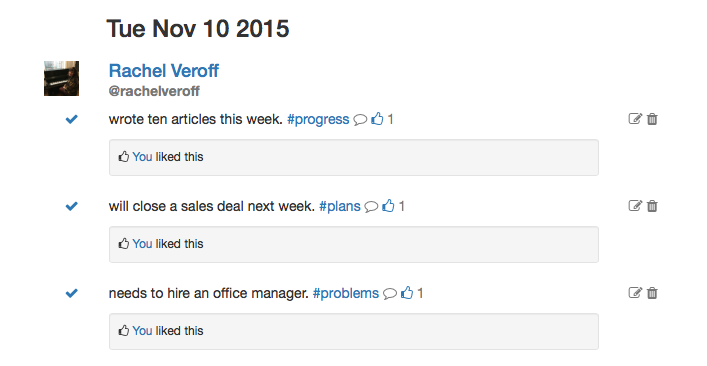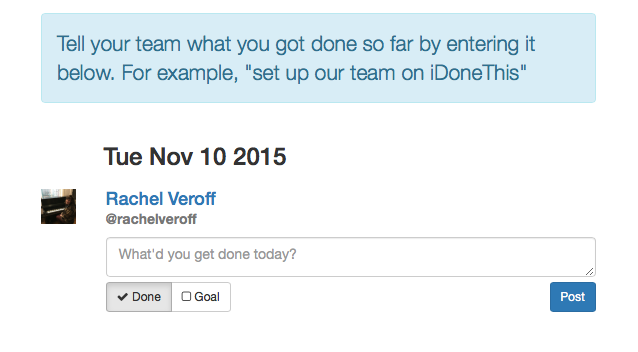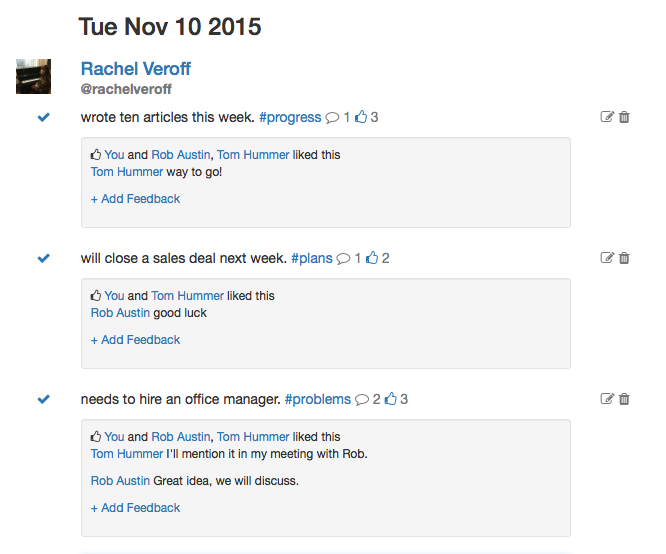If the daily challenge of communicating with your co-workers is driving your crazy, you are not alone. Between all of the different tasks and moving pieces on your schedule, keeping your team members informed about your progress can be a frustrating challenge. It’s equally overwhelming trying to stay up-to-date on what your co-workers are doing. There is a huge amount of information to sift through.
Some companies implement strategies like progress reports and extra meetings to facilitate communication. But these are often time-consuming and they only add to the white noise. It’s time to clear your head. The key to successful communication is clarity, not buzz.
If you want to maximize the efficiency of your team’s status reports, think about using PPP.
PPP Streamlines Communication
Progress, plans, problems is an approach to communication that enables you and your team members to share what you are working on in a friendly and efficient way. The three P’s stand for “progress, plans and problems.” This technique is used by companies like Skype, Ebay, Facebook, and Seedcamp to streamline communication channels between managers and co-workers.
Every week, people report their top 3-5 achievements, goals and challenges in an email memo that is easy to read. It saves time and it helps keep everyone on the same page. The template looks like this:
- Progress: What were your three biggest accomplishments this week?
- Plans: What are your top three priorities for next week?
- Problems: What are three problems you are facing? Problems usually require the help of other people to solve.
It’s important to encourage your team members to give each other updates about their progress on assignments because it allows everyone to see the larger picture. These updates can happen daily, weekly or monthly, depending on your company’s needs.
The three P’s outlined above provide a de facto template to start from. Depending on what your company does, you might decide to add extra categories as you go along. The point is to keep everyone on the team informed and in sync, without wasting a lot of time with lengthy progress reports or meetings.
It Builds Team Culture and Promotes Efficiency
My team started using the PPP approach a few months ago, and I’ve already noticed the benefits. We collaborate together well, and we are clearer about our objectives.
- It helps build a goal-focused team culture. Sharing our progress, plans and problems with one another helps build a culture of openness and gratitude. I can glance at a memo and know very easily what my co-worker in another department accomplished last week. The next time I see that co-worker, I can thank him specifically for the work he’s done.
- The PPP approach also creates a history. By documenting our progress in the form of these easy-to-read updates, over time, we’ve built up a clear track record of our larger trajectory and growth. This track record is a great resource when it comes to preparing reports for our investors, potential investors, customers, and advisers.
- This technique also cuts down on time spent in meetings. Sending out short and sweet weekly email updates makes keeping others in the loop easier than ever. Likewise, staying informed about your team members’ projects is as easy as skimming a quick email.
In addition, if you’re using an automated progress-reporting tool like iDoneThis, you don’t even have to remember to write updates. The app will send you an automatic reminder, prompting you with the three basic questions: 1) Progress – What have you done this week? 2) Plans – What are you goals for next week? 3) Problems – What challenges are you facing?
Reply to this prompt, and the next day you will receive a digest with what everyone on the team did. It’s that simple.
Implement PPP in Your Workplace
PPP is easy to learn, easy to use, and it’s a huge time saver. It promotes transparency and allows you to avoid the hassle of miscommunication between team members and micromanagement. It’s especially effective in small companies where staying clear about the week’s priorities is essential to success.
Build Momentum Through Habit
There are many methods for implementing this communication practice with your team. Try starting with a small group of people who already work closely together to see what their experience is. Emphasize that this exercise will only take 10 minutes per week, or 10 minutes per month. Once the habit gains traction, it will be easier to introduce to a larger pool of people.
Collecting these updates over time will give everyone a lot of insight into how the company is progressing towards its goals. In my experience, my team really appreciates being able to measure how far it’s come.
Win People Over
If somebody doesn’t like the “progress, plans and problems” approach, encourage them to try it for a test period of time. Most likely, they are nervous about shining a spotlight on the problems they’re struggling with. This is a normal instinct to have, but the reality is that stating your roadblocks clearly to the team is the fastest way to finding a solution.
Asking for help can be scary, but it’s also how collaboration works and it can lead to amazing results. Maybe your progress is stalled on a project because you’re waiting for a shipment of new computer equipment to arrive. If you mention this in your weekly update, it is entirely possible that one of your co-workers will ping you back with a creative solution. It’s moments like that where the value of teamwork becomes clear to everyone.
Give and Ask for Feedback
PPP is a tool to enhance communication, so you definitely want to encourage people to engage with each other. When a co-worker reports that they accomplished a big task, let them know that you’re proud of them. Everybody enjoys receiving feedback on their progress and their problems, so be generous with this.
Follow These Pointers When Writing PPP:
- Make your update easy to read. Ask yourself: would I read this?
- Make each item easy to understand for everyone, not just you. Keep the items short but rich in information.
- Use external links, facts, numbers and background information to illustrate your update.
- Don’t include more than 5-6 items in each category. Nobody reads long reports.
This exercise takes just 10 minutes per week from every person on your team, and it helps tremendously with strengthening the team spirit. PPP is a weekly habit that encourages collaboration and solidifies the team’s objectives.
Case Study: How Customer.io uses PPP to stay in touch with external people
A few months ago Colin Nederkoorn, co-founder and CEO of Customer.io, got some great feedback on his product from some people outside of his company. Customer.io is a messaging platform for internet companies, and Colin was grateful to have received the advice. But months went by, and he was still not certain of how to craft his thank you email.
The longer Colin waited before following up with his advisers, the more he struggled with how to frame his update. That’s when he discovered the PPP approach.
He began sending out a monthly update of his three P’s—not just internally within his company—but also externally, to people outside of his company. It was the perfect hack.
“You can cast a wide net to get help with your problems. They are then fully up to date on how you’re doing, and they know what your next efforts will be,” Colin says. “Updating people any other way takes time and effort away from what really matters: building your company.”
Colin continues to use this technique for keeping his investors and trusted advisers updated about his projects in a way that is helpful, informative and non-invasive. The added benefit of emailing his updates widely is that anybody might jump in to help with a problem.
“Progress, plans, problems” is an effective and friendly way to keep people in the loop. Not only does it keep your team in sync with easy-to-read updates, it promotes a culture of collaboration and teamwork that can be truly exhilarating and rewarding.
P.S. If you liked this article, you should subscribe to our newsletter. We’ll email you a daily blog post with actionable and unconventional advice on how to work better.



